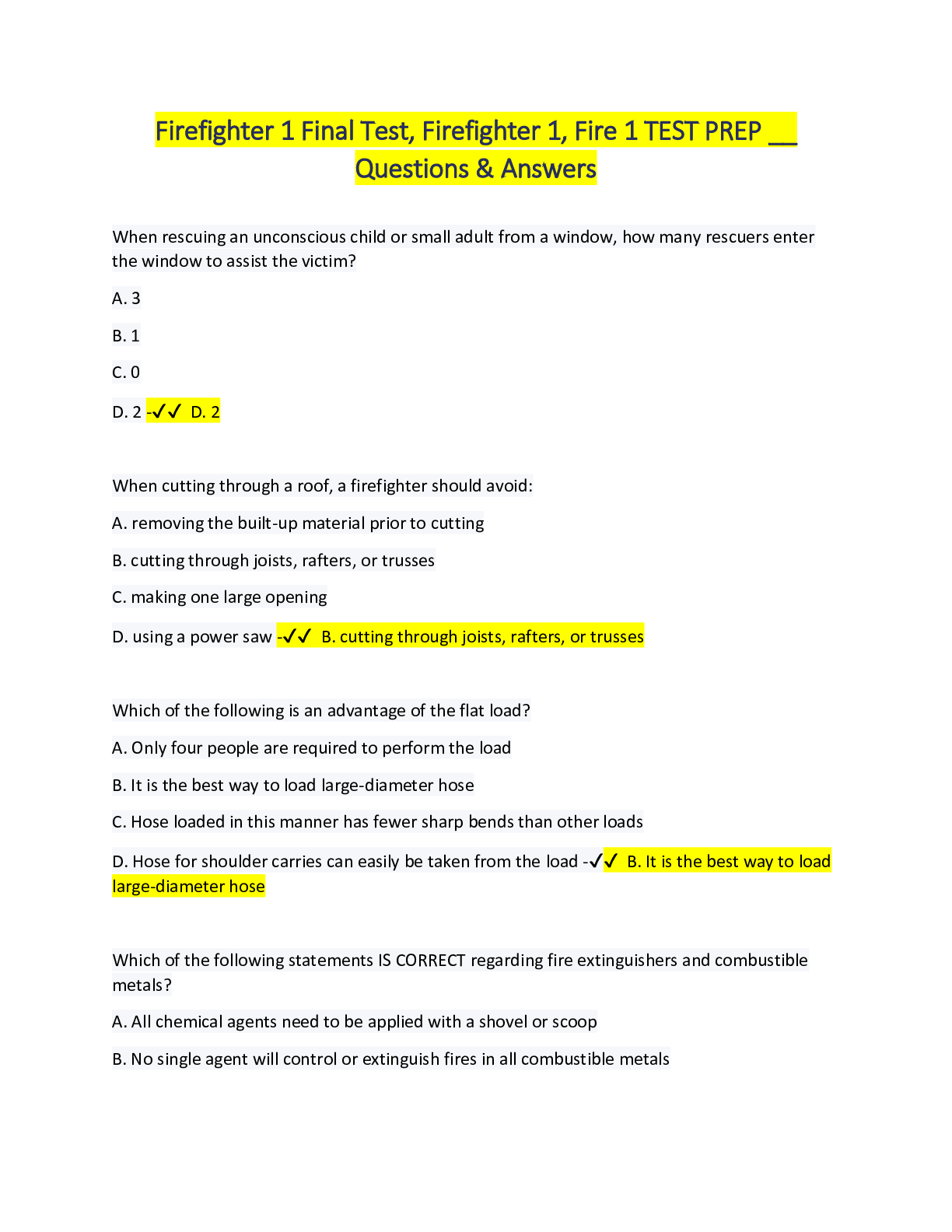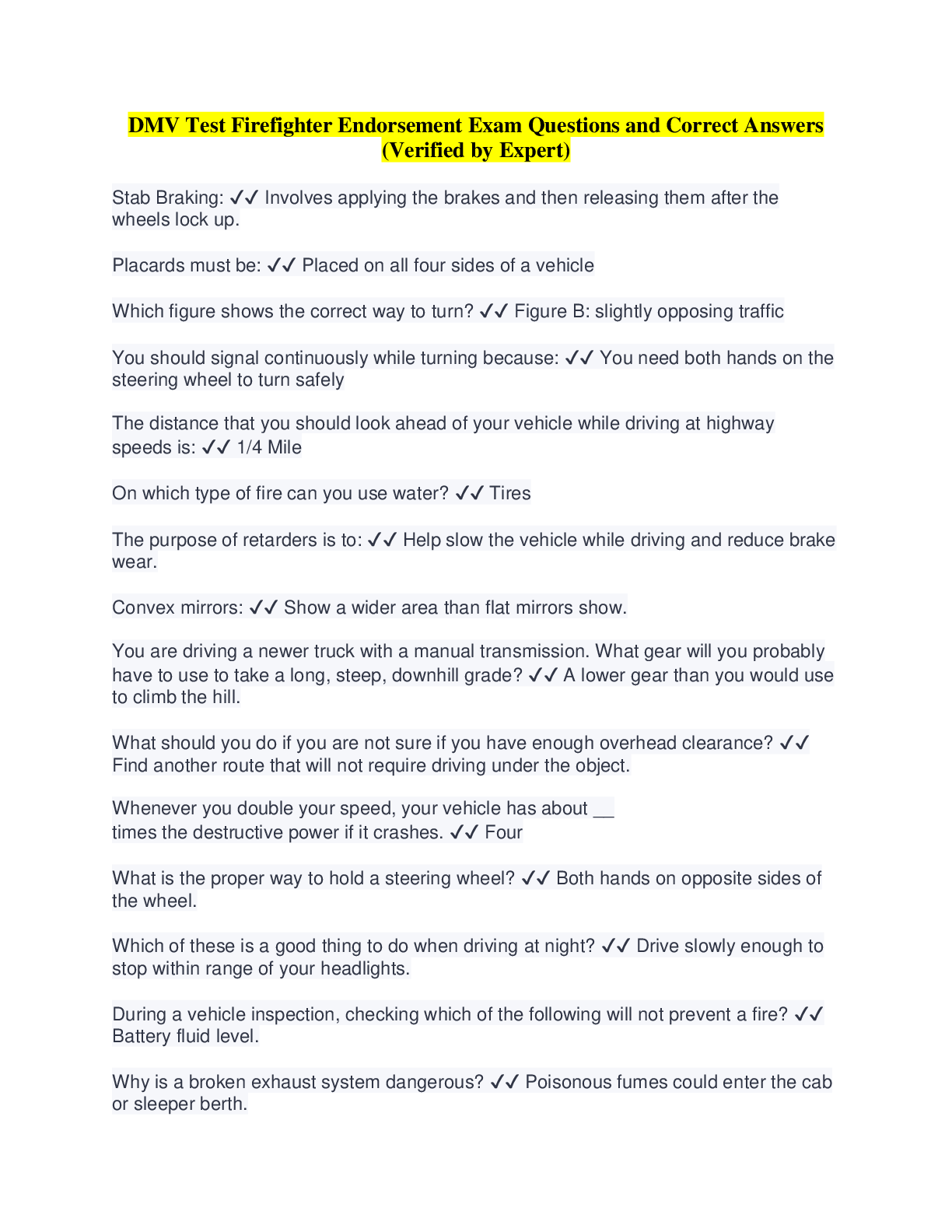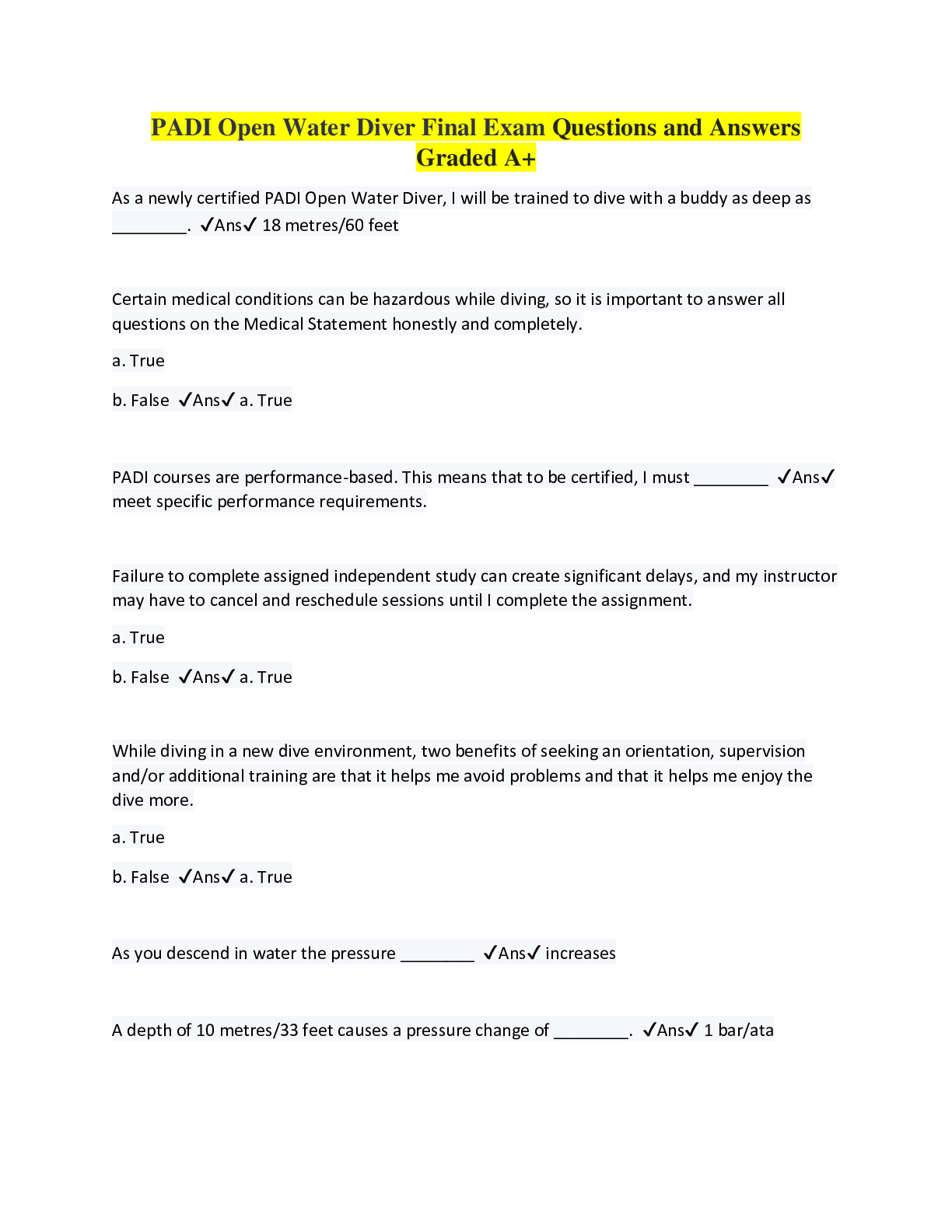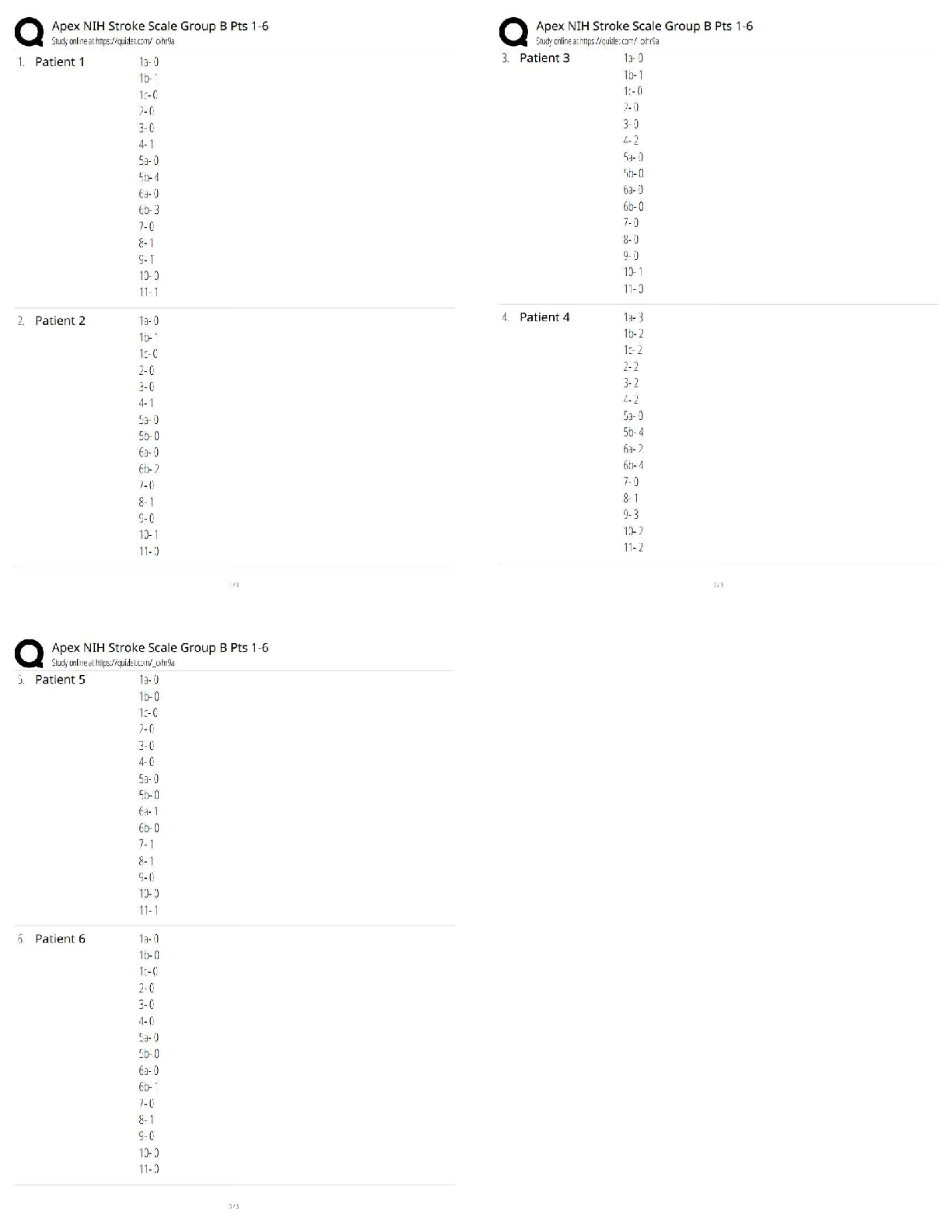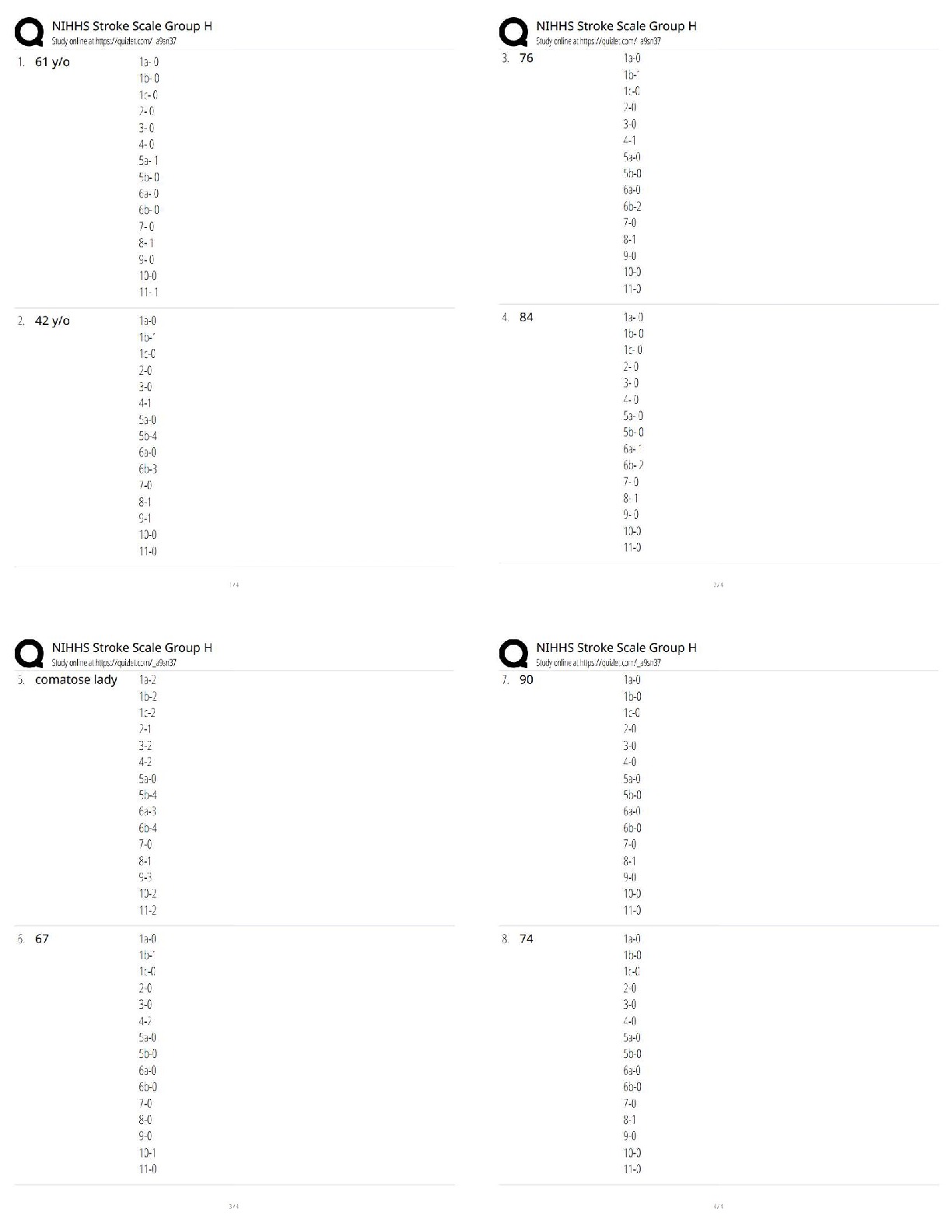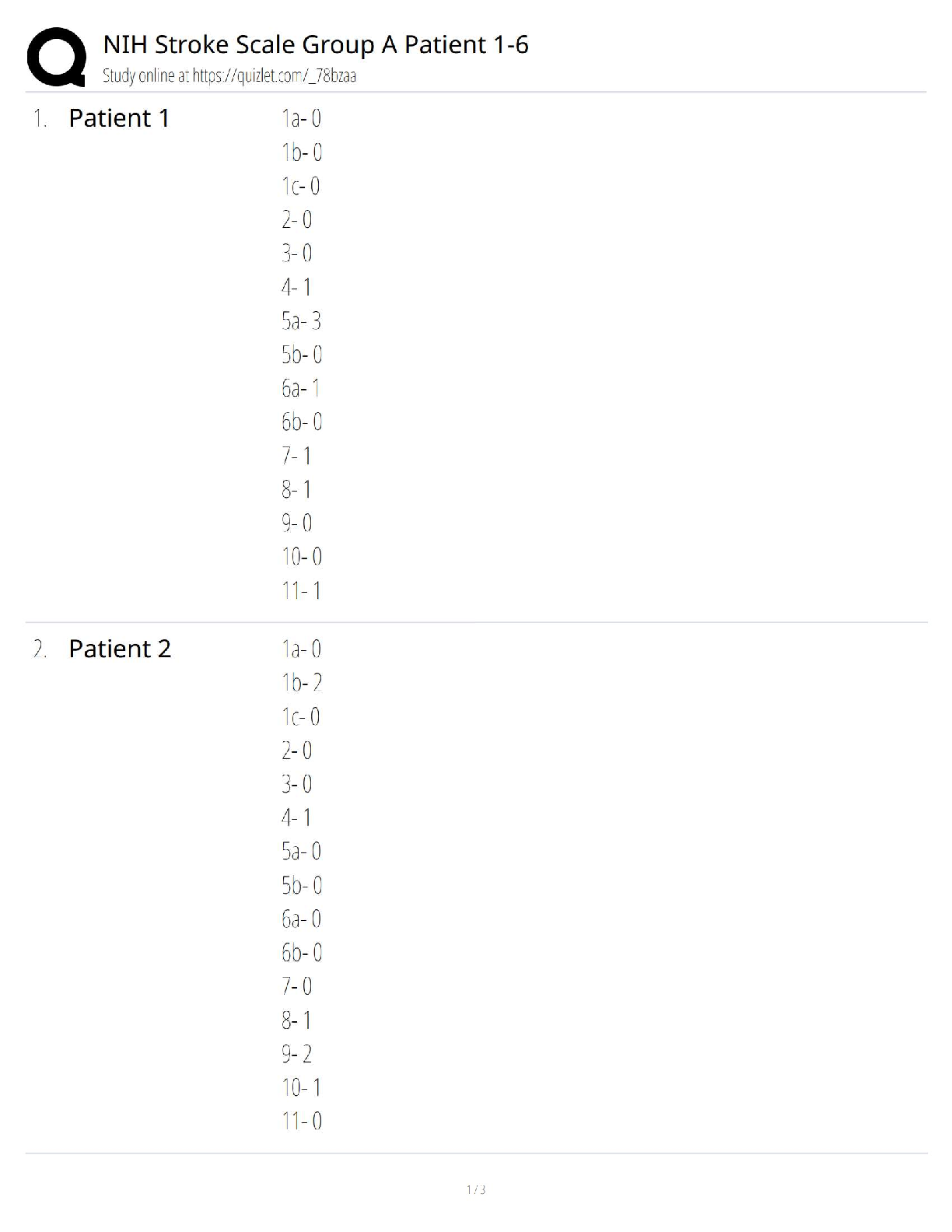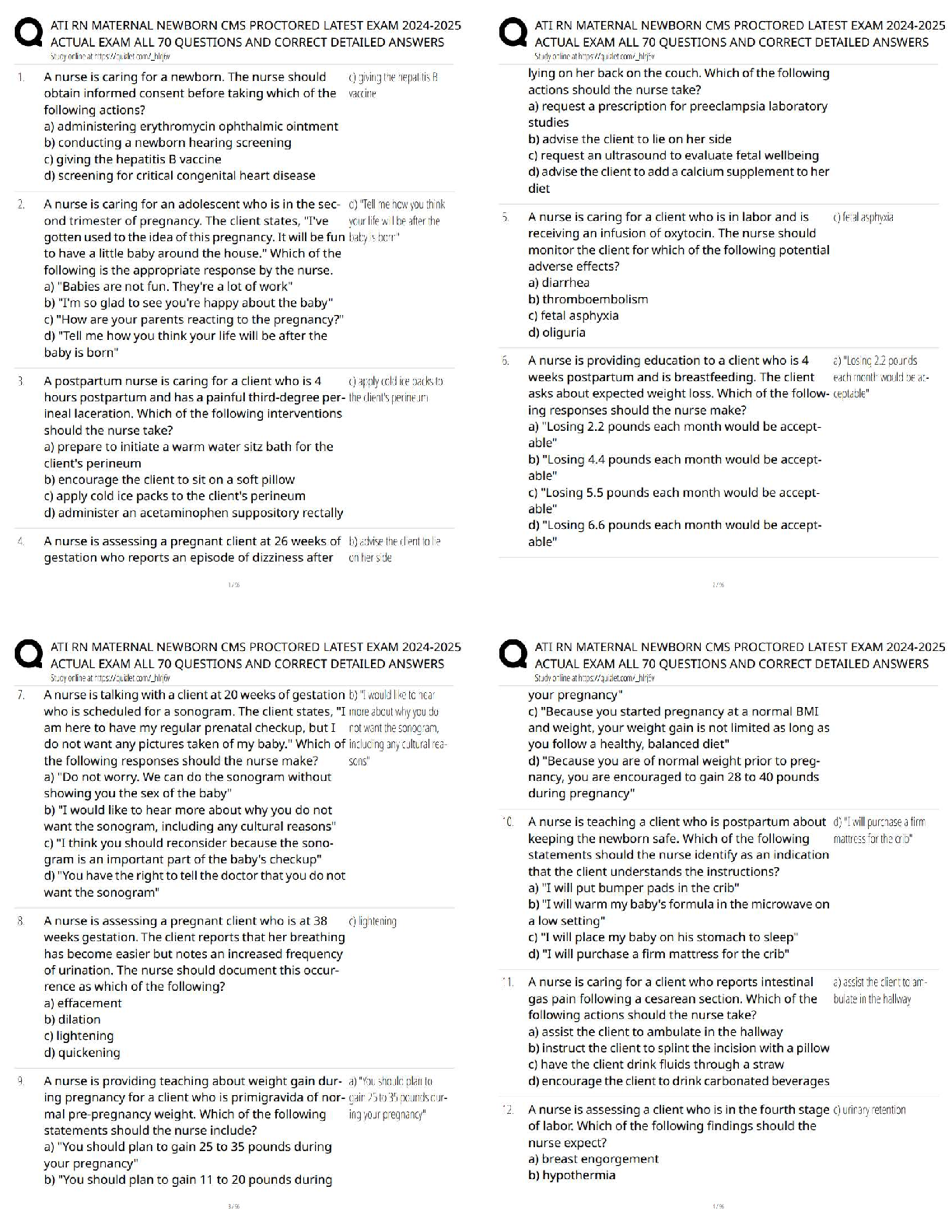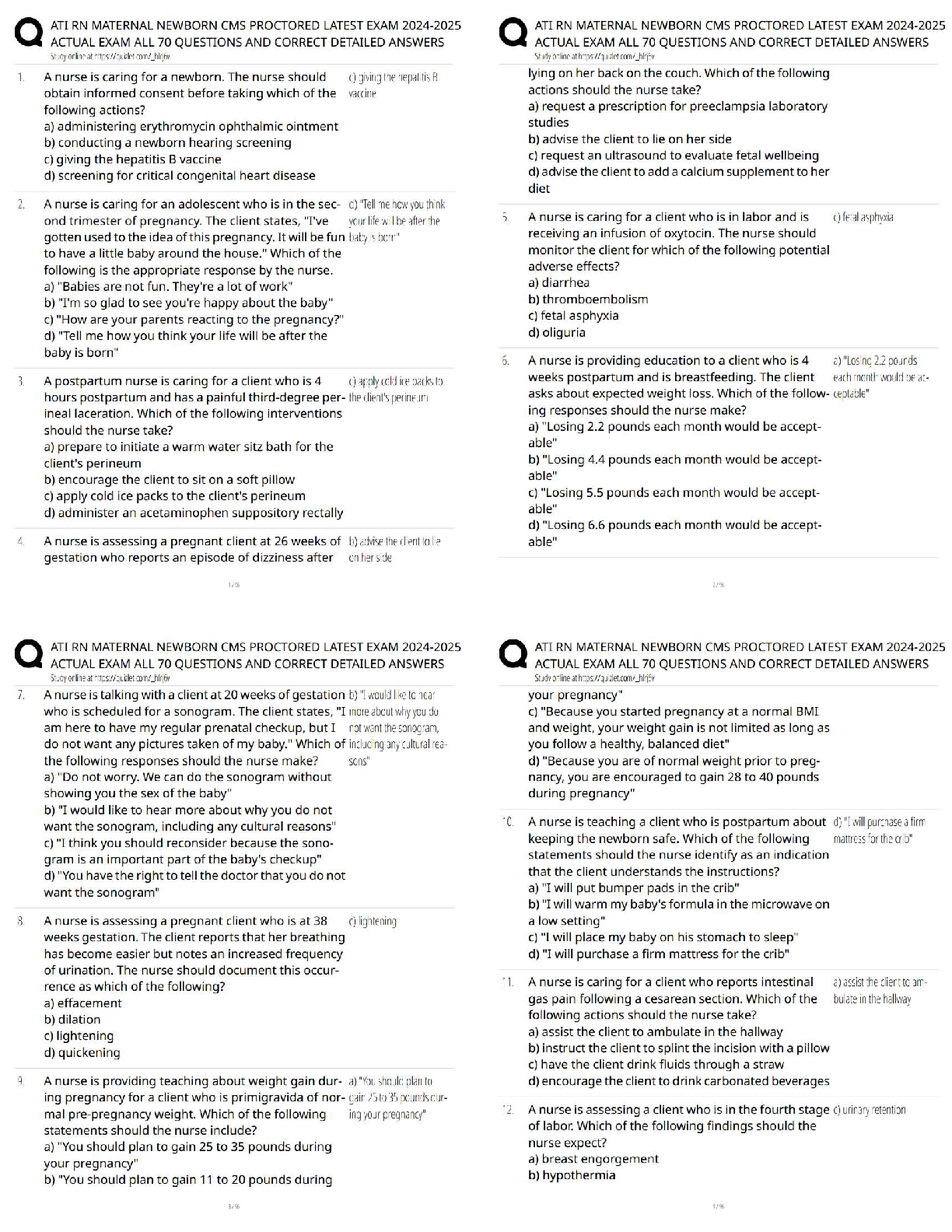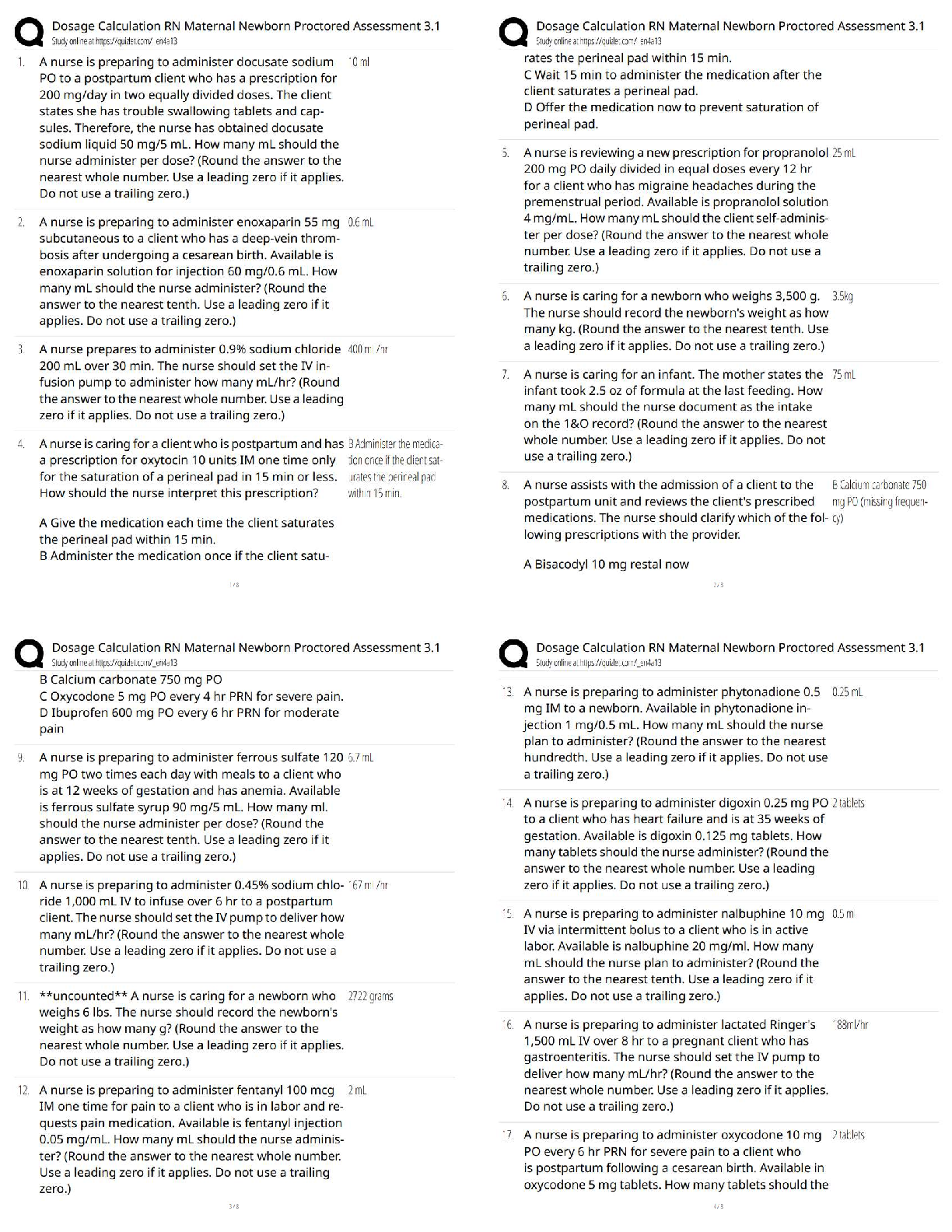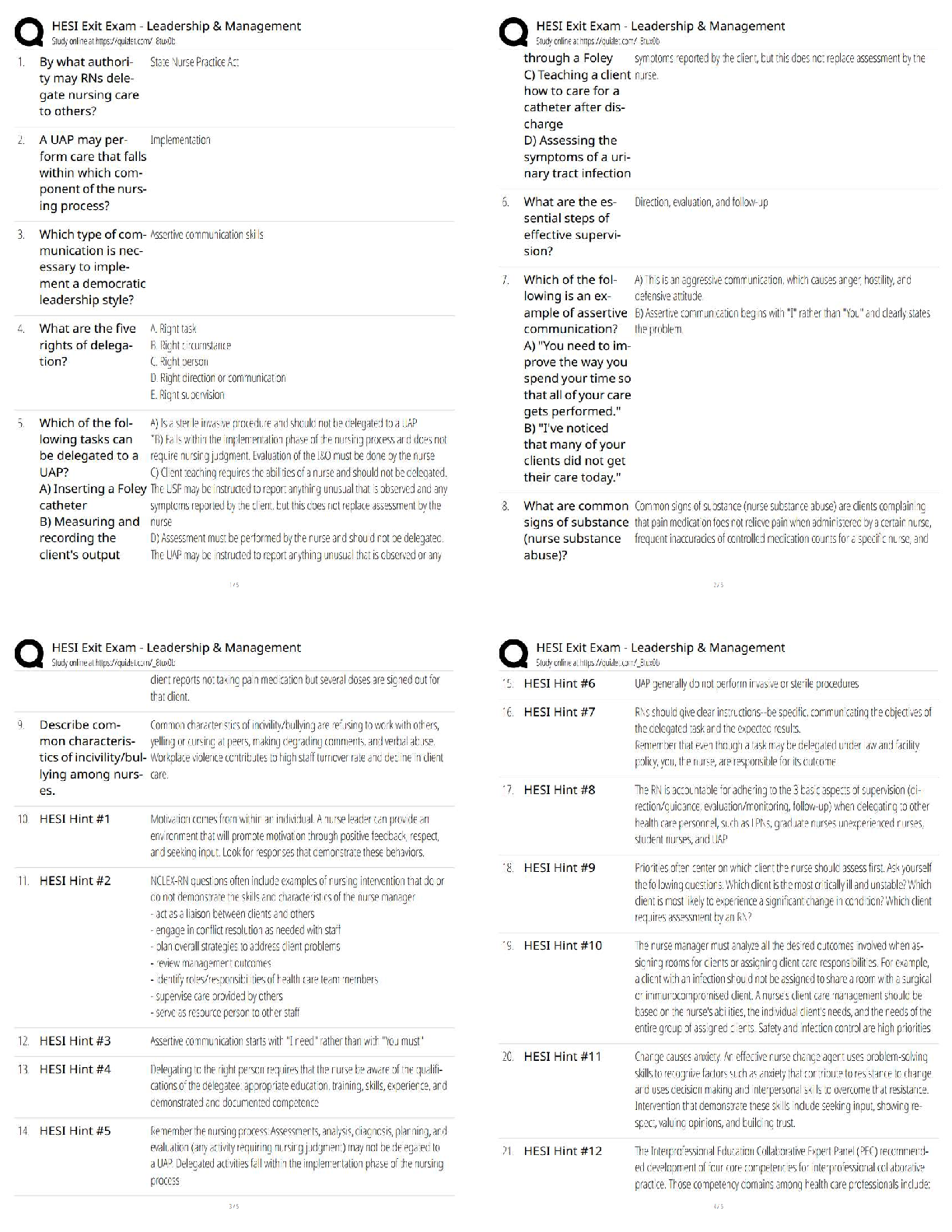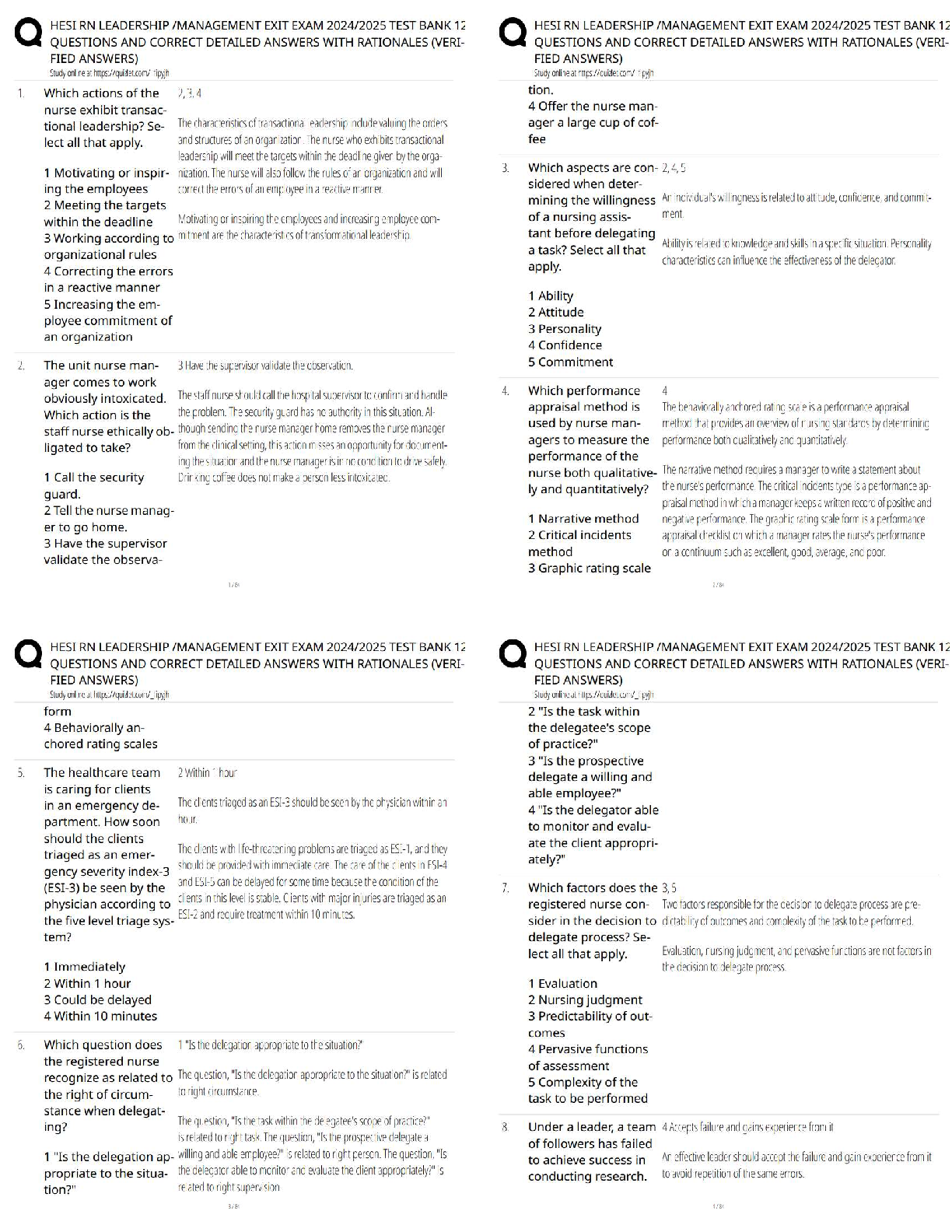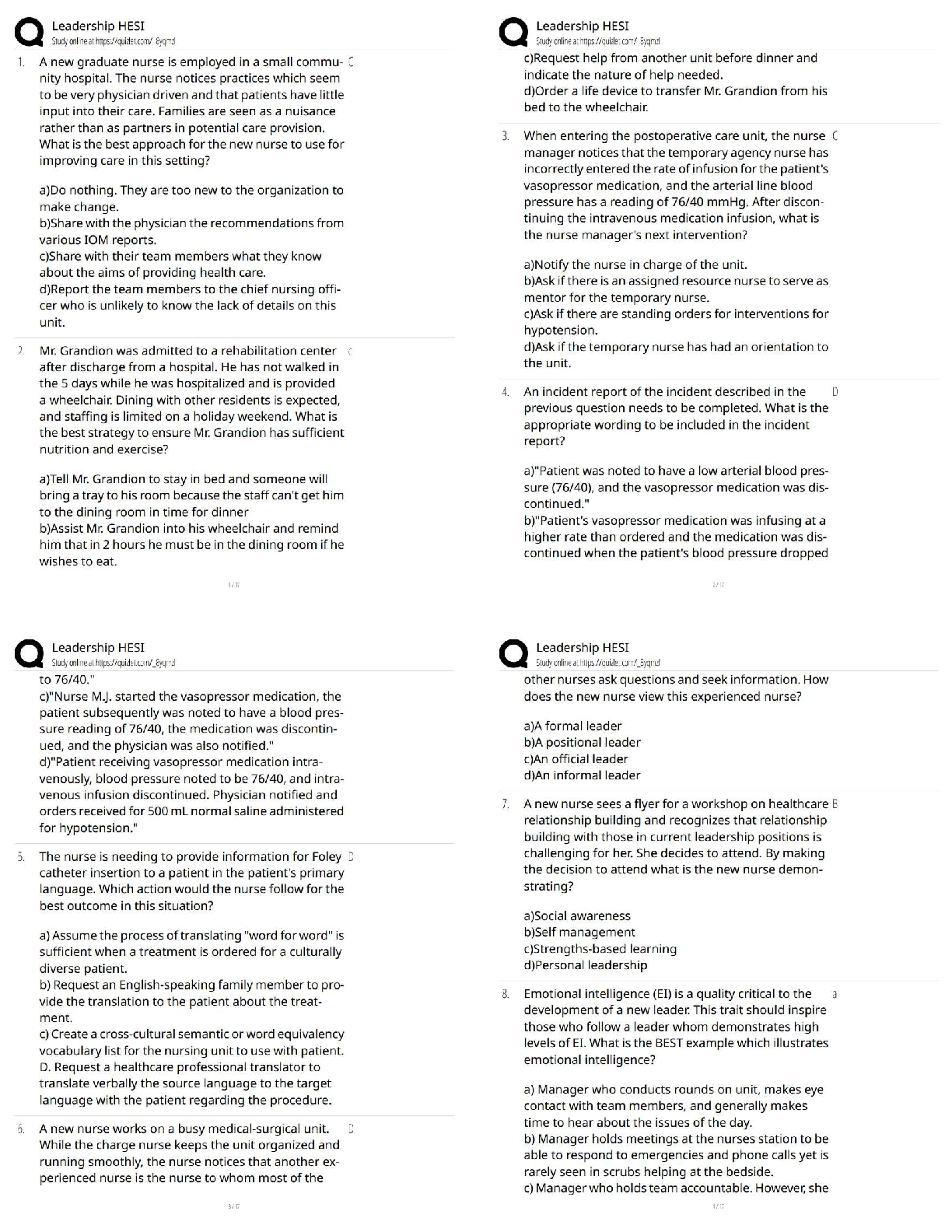Medical Studies > QUESTIONS & ANSWERS > RPSGT PRACTICE Exam Questions and Answers (Complete Solution) Graded A+ (All)
RPSGT PRACTICE Exam Questions and Answers (Complete Solution) Graded A+
Document Content and Description Below
RPSGT PRACTICE Exam Questions and Answers (Complete Solution) Graded A+ a patients oximeter reading during patient calibration is 88%. which of the following would be the appropriate response? ✔� ... �� place the probe on the patients earlobe a patient with ondines curse would be expected to have which type of respiratory impairment in sleep ✔✔ central sleep apnea according to the aasm, intercostal emg activity is an acceptable alternative sesor for recording what parmeter ✔✔ detection of respiratory effort slow rolling eye movements occuring during stage n1 sleep will best be seen at low filter setting of ✔✔ 0.3hz a 1.0 hz eeg wave is measured at 15mm peak to peak. the sensitivity is 5uv/mm. the voltage of the wave is ✔✔ 75uv a cheyne stokes breathing pattern is often seen in patients with ✔✔ congestive heart failure capnography measures ✔✔ expired co2 which of the following high frequency filter settings is recommended for recording submental emg ✔✔ 100hz endoesophageal pressure measurements would be most helpful in evalutating which sleep disorders ✔✔ sleep related breathing disorders a patient being evaluated for obstructive sleep disordered breathing has atrial fibrillation. what should the tech do ✔✔ continue to observe and document rhythm which of the following is the most dangerous cardiac rhythm ✔✔ ventricular fibrillation how would you compute sleep efficiency ✔✔ total sleep time divided by time in bed x 100 how do you calculate apnea + hypopnea index ✔✔ # apneas and hypopneas divided by tst x60 which high pass filter setting is most appropriate for recording respiration ✔✔ 0.1hz the purpose of an exhalation port in a cpap circuit is ✔✔ to vent exhaled c02 which of the following are characteristic of a pvc ✔✔ the qrs is wide and bizarre a normal variation in sinus rhythm which is related to respiratory rate and results from vagal tone inhibition describes ✔✔ sinus arrhythmia a sustained heart rate of >90 beats/minute describes ✔✔ sinus tachycardia partial av block in which the pr interval increases progressively until there is an atrial impulse without a corresponding ventricular beat describes ✔✔ mobitz type 1 av block what is the most likely low frequency filter setting of channel 1 ✔✔ 1.0 hz which channel setting is best for emg recording ✔✔ 2 chan 2 has a very quich return to baseline, (very short time constat) refer to the 30 second epoch shown here. if the next epoch contains 30 seconds of low voltage, mixed frequency in the 4-7 hz range, and no eye movements, what is the sleep stage of that next epoch? ✔✔ stage n1 the epoch shown contains a k complex, possible a spindle and less than 20% high amplitude slow waves, making it stage n2 there is an arousal at the end of the epoch. if the following epoch is as descrived, without either a k complex or spindle. it is then stage n1 [Show More]
Last updated: 2 years ago
Preview 1 out of 6 pages
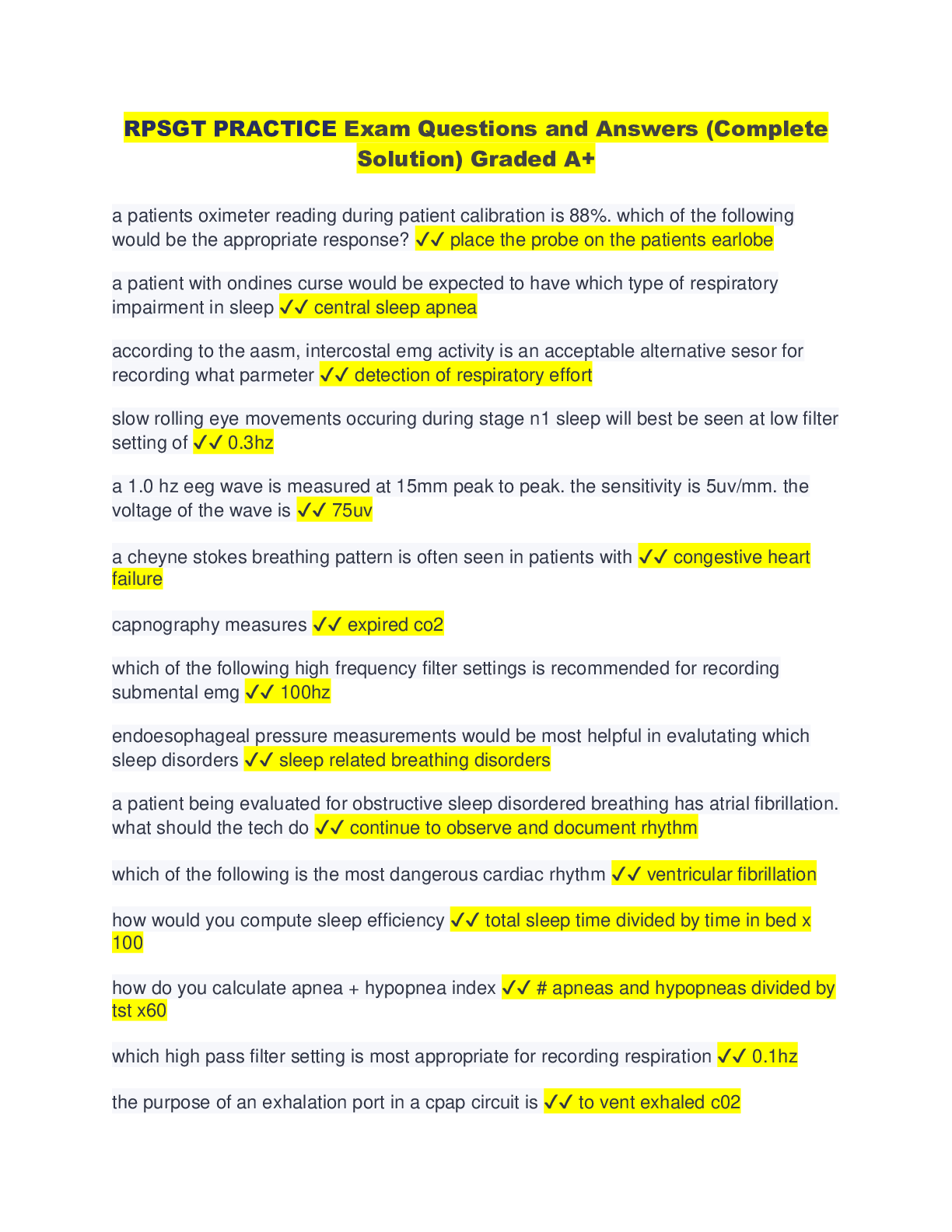
Buy this document to get the full access instantly
Instant Download Access after purchase
Buy NowInstant download
We Accept:

Also available in bundle (1)
Click Below to Access Bundle(s)
 Graded A+.png)
RPSGT Full Solution Pack (All RPSGT Exams and Study Questions Are Here, All Answered Correctly, Graded A+)
RPSGT Exam (Complete Solution) Graded A+ RPSGT-exam 1 Questions and Answers (Complete Solution) Graded A+ RPSGT PRACTICE Exam Questions and Answers (Complete Solution) Graded A+ CPSGT AND RPS...
By Crescent 2 years ago
$15
6
Reviews( 0 )
$8.00
Can't find what you want? Try our AI powered Search
Document information
Connected school, study & course
About the document
Uploaded On
Dec 20, 2022
Number of pages
6
Written in
All
Additional information
This document has been written for:
Uploaded
Dec 20, 2022
Downloads
0
Views
175

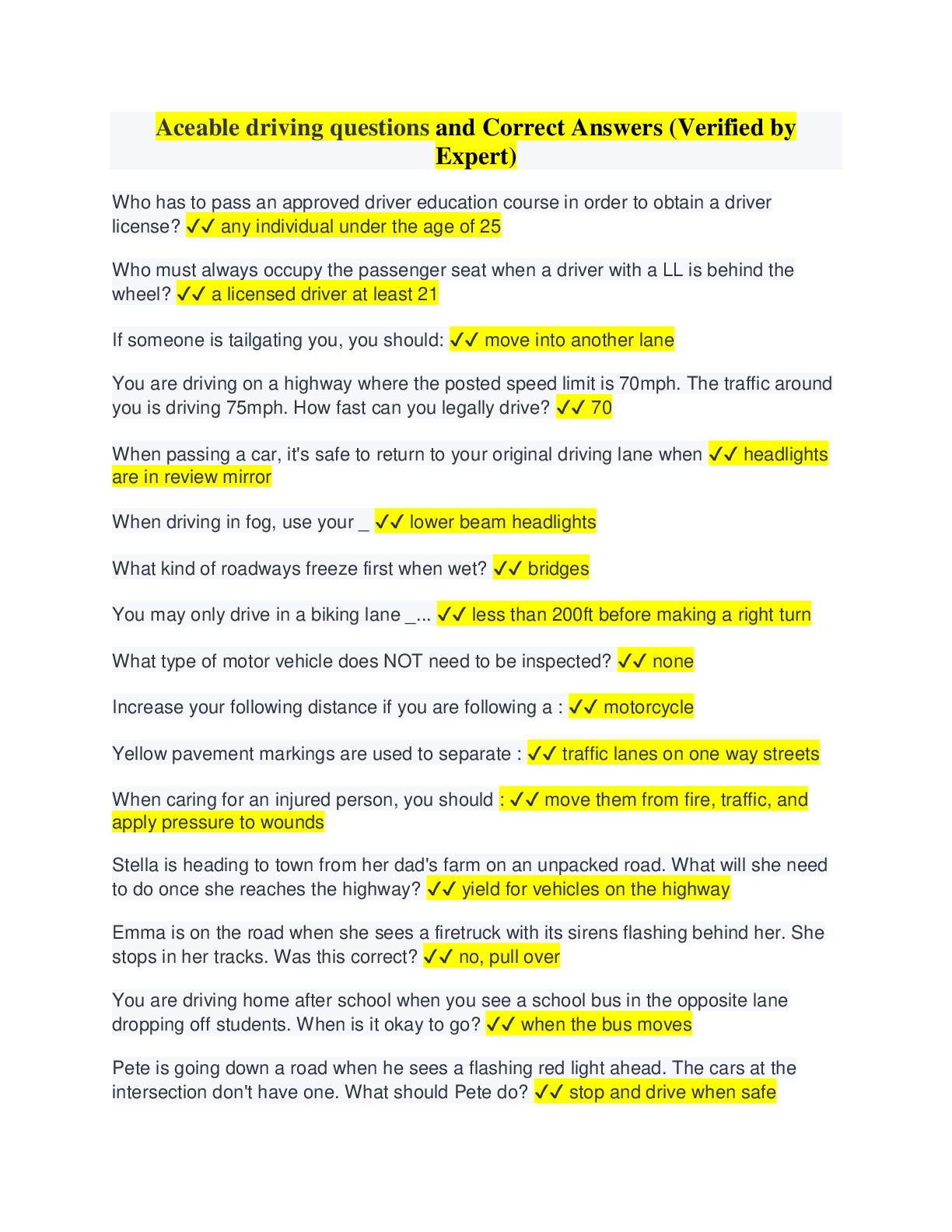

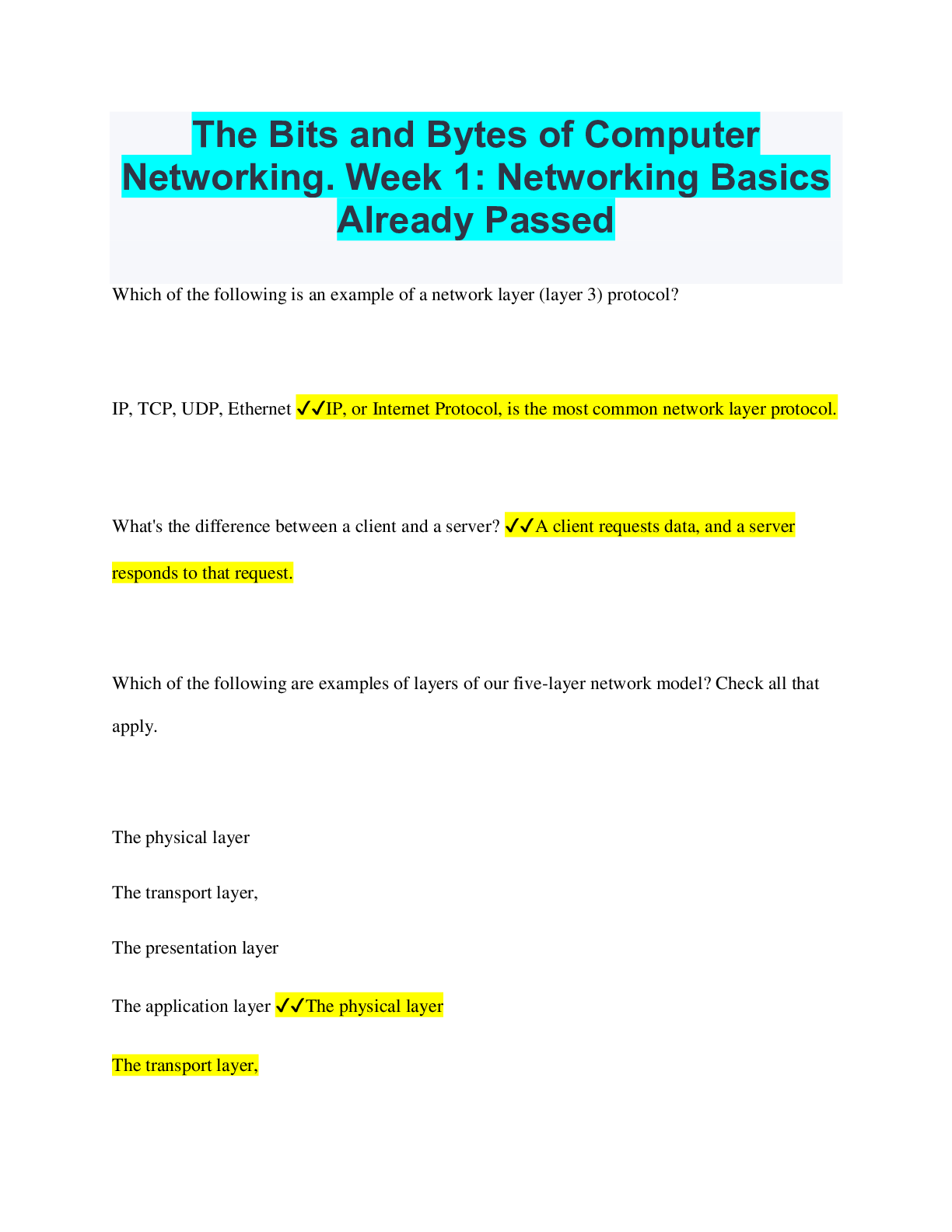
 Answered 2023.png)


